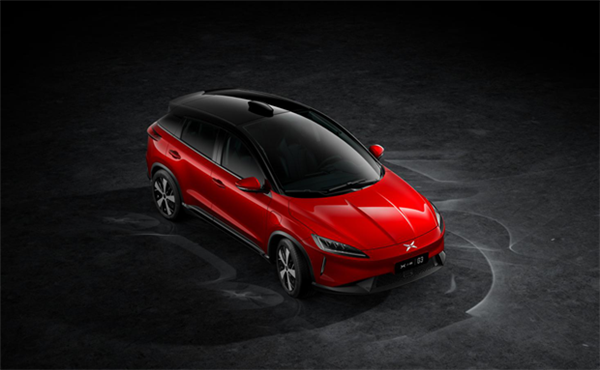Xpeng Motors launches G3 2020 Edition with 520 km NEDC range furthest in its class
Xpeng Motors on July 10 launched the Xpeng G3 2020, the new enhanced high-performance version of its G3 SUV, boasting a world-beating extended NEDC driving range of 520 km and energy density of 180 Wh/kg. The launch further adds to Xpeng's existing product portfolio of the G3 SUV and the P7 coupe, expanding its product offering for the world's largest EV market.
The Xpeng G3 2020 model is available in two versions: The G3 400 and the G3 520, with the price range RMB143,800 – 196,800, and delivery to customers starting in September 2019.

The G3 520 version has an extended 520 km NEDC range, giving it the furthest range of any compact EV SUV in its class. Powered by a new-generation lithium-ion CATL battery, G3 520 has an energy density of 180 Wh/kg, a breakthrough for China's new EV brands. Its battery pack achieves IP68 waterproof & dustproof rating, the highest by global industry standard. It has an enhanced supercharging capacity of 30 minutes for recharging from 30% to 80%. The G3 400 version will have 401 km NEDC range.
The Xpeng G3 2020 has an optimized chassis hardware configuration and tuning to provide users with a higher quality driving experience. The chassis is more compact, the suspension is more resilient with enhanced stability of control and ride comfort. With a two-cylinder front brake, a larger rear brake and a larger bore vacuum booster, the braking performance is improved significantly to achieve a braking distance of ≤37 m for 100 km/h. The Xpeng G3 2020 comes equipped with the Bosch's new generation EPB-MI electronic parking brakes, with safety functions such as ramp parking, dynamic parking, automatic departure, automatic parking, and anti-sliding.
The Xpeng G3 2020 Edition carries a newly upgraded version of XPILOT 2.5 with new features including TJA (Traffic Congestion Assist) and ICA (Intelligent Cruise Assist), enabling it to perform LCC (Lane Centering Control) function under both city drive and highway conditions. These new features increase the G3’s convenience, comfort and safety, by ensuring that the car remains centered in traffic lanes in both congested urban conditions and high-speed long-distance cruising, despite driver fatigue or uneven road surfaces. In addition, the new ALC (Automatic Lane Change) function allows the G3 2020 Edition to assess traffic and road conditions in real time, and automatically changes lanes just by triggering the turn indicator, facilitating more accurate overtaking and lane changing despite blind spots. These safety features are further supported by AI-powered driver fatigue and distraction warning, as well as driver heartbeat and health status monitoring.
LCC (Lane Centering Control) function under both city drive and highway conditions. These new features increase the G3’s convenience, comfort and safety, by ensuring that the car remains centered in traffic lanes in both congested urban conditions and high-speed long-distance cruising, despite driver fatigue or uneven road surfaces. In addition, the new ALC (Automatic Lane Change) function allows the G3 2020 Edition to assess traffic and road conditions in real time, and automatically changes lanes just by triggering the turn indicator, facilitating more accurate overtaking and lane changing despite blind spots. These safety features are further supported by AI-powered driver fatigue and distraction warning, as well as driver heartbeat and health status monitoring.

“The release of the Xpeng G3 2020 demonstrates that Xpeng Motors is able to expand, upgrade and enhance its product portfolio, addressing customer demands and reinforcing our competitiveness in China's fast-growing EV intelligent transportation market,” said Xpeng Motors Chairman & CEO He Xiaopeng. “As well as a superb vehicle with world-class capabilities, the Xpeng G3 2020 is a confirmation of our capabilities as a frontrunner in China's EV market.”
Speaking at the RISE conference in Hong Kong today, Brian Gu, Vice Chairman and President of Xpeng Motors, said that there’s a rapid adaptation for the Chinese consumers to use voice commend and in-car smart features. This new phenomenon not only contributes to the EV sales volume increase but also encourage innovation of the sector.

